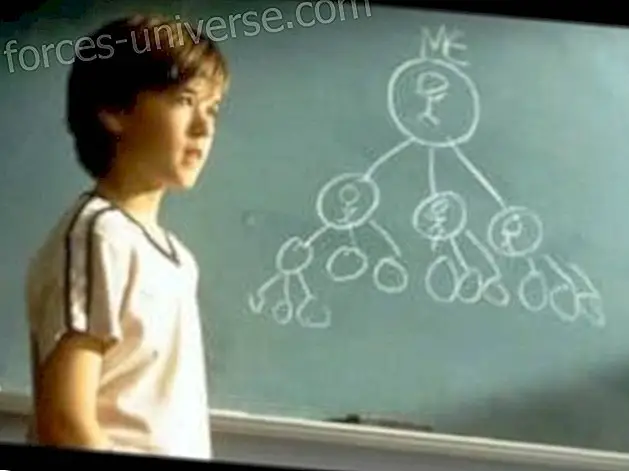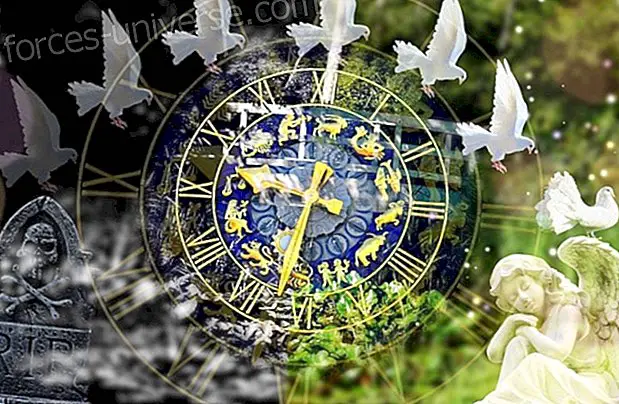The fractal structure of harmonic oscillators in music: New Year's concert: JS.Bach. Brandenburg concerts.
- 2011

The analysis of the structure of different musical works has shown that the selection of the notes made by different composers, at different times, has some common elements. This is one of the Brandenburg Concerts of Bach, of the String Quartet # 3 of Babbit, of piano works by Scott Joplin, all these works have the same shape if the structure is considered in terms of frequencies. We will explain this below.
In the auditory analysis of various musical works an amount that has been studied is the audio power of music. This amount is, in essence, the energy that is emitted in the form of sound waves every second, when the musical work is performed. By analyzing how this quantity is structured, in terms of frequency, what is called its spectrum is obtained.
How do the spectra of the different musical works depend on the frequency?
Analyzes made of different musical works have shown that their spectra depend on the frequency, which we will call with the letter f, such as (1 / f). If we remember what was analyzed in the previous chapter, we see that this spectrum is a power law that, in mathematical language, depends on the frequency in reverse to the first power of f (since the exponent of f in (1 / f) is 1). Therefore, as already described, this spectrum is self-similar and consequently contains a fractal structure.
A spectrum of the type mentioned in the previous paragraph is called the pink spectrum.
Why did Bach and many other composers choose the pink spectrum? The reality is that no musician ever heard of these ideas, much less chose them deliberately. To understand what happens we will explain how music would be made with another type of spectrum.
One way would be as follows: each note that is written is such that its position and duration do not depend at all on the previous notes or their duration. In this case it is said that the composition is completely random or stochastic. An example of this type of music is presented in Figure 33 (a). The spectrum of the audio power of this type of music is the same for any frequency value, which means that the value of the power is the same for any frequency values, that is, it is a quantity constant. Mathematically, the spectrum depends on the frequency (1 / f0), since f0 = 1. A spectrum of this type is called white. If this type of music were played on an instrument we would hear it without structure; It would also give the impression that from one note to another there would always be a surprise.
Another type of spectrum, going to the other end, is the one that depends on the frequency (1 / f²), called brown or brown, a name that was given because it is associated with the Brownian movement discussed in Chapter IV. Figure 33 (b) shows music that has the brown spectrum. In music, each note and its duration depend to a considerable degree on the previous notes. Therefore, the feeling you have when listening to it is that after having played some notes the following are predictable.

In the figure: (a) Example of white music. (b) Example of brown music. (c) Example of pink music.
Music that has a pink spectrum, that is (1 / f), is, so to speak, among the cases of random music (white spectrum) and deterministic music (brown spectrum). In this case the notes and their duration are neither very predictable nor very surprising. An example of this type of music is shown in Figure 33 (c).
Returning to the question asked above: why did the composers effectively use pink spectra, that is, a law of powers (1 / f) to compose their music ?, it can be said that the composers have tried, and certainly many of They managed to compose interesting music. The question should be raised as follows: why does interesting music have a pink spectrum? The answer could be that music with this type of spectrum turns out to be neither very predictable (brown spectrum) nor very surprising (white spectrum). The Dutch scientist Balthazaar van de Pol once said that Bach's music is great because it is inevitable and at the same time surprising, which means that its spectrum is pink.
Because the music that has a pink spectrum is self-similar, it has a similar structure at different frequency scales. What happens on a frequency scale must occur on any other frequency scale. If such a composition were recorded on magnetic tape at a certain speed and played at different speeds, what would be heard would be similar to what was recorded. This contrasts with what happens with the human voice, because when a recording is played at a speed, for example double what should be done, it sounds very loud. One way to exhibit self-similarity is with the help of an electronic device that generates sounds of the frequencies you want. If a sound is produced that is the superposition of 2 notes, each note being an octave (double frequency) of the previous one and begins with a note of 10 Hertz (Hz), (1 hertz = 1Hz = 1 / sec), The following 11 notes would be of frequencies:
20 = 2 x 10, 40 = 4 x10, 80 = 8 x 10, 160 = 16 x 10,
320 = 32 x 10, 640 = 64 x 10, 1280 = 128 x 10,
2560 = 256 x 10, 5120 = 5l2 x l0, 10 240 = 1024 x 10 and
20 480 = 2 048 x 10, all in Hz units.
Now let's change each of these notes for others that are of higher frequencies by a semitone (corresponding to the difference between two successive notes of a piano); the semitone frequency is obtained from the previous note multiplying by 1.05946. Now the sound that is the superposition of the following frequencies will be played:
10 x 1.0594 = 10.6, 20 x 1.05946 = 21.2,
40 x 1.05946 = 42.38, 80 x 1.05946 = 84.76,
160 x 1.05946 = 169.51, 320 x 1.05946 = 339.03,
640 x 1.05946 = 678.06, 1 280 x 1.05946 = 1356.11,
2560x 1.05946 = 2712.22, 5120 x 1.05946 = 5424.44,
10240 x 1.05946 = 10848.88 and 20480 x 1.05946 = 21697.74 Hz
This sound will be heard with a louder tone than the previous one.
If the frequency of each of the notes is increased by one semitone again, the superposition of the new sounds will produce a higher pitch sound. If the process of increasing each of the sound components by one semitone is repeated 12 times, it turns out that the sound that is produced is indistinguishable from the original! This is a musical demonstration of self-similarity.
Additionally, if we take as reference the non-audible time / spectrum diagrams, we will have that in the nuances> 20 Hz and higher than 28, 000 Hz, we will obtain a harmonic logarithm that is expressed as a succession of single and double events in the silences:

The key to the harmonic oscillators is in the succession of silences or frequency chains of the non-audible spectrum.
The combination of the above concepts, results in this wonder that we offer to receive the new year 2011:






